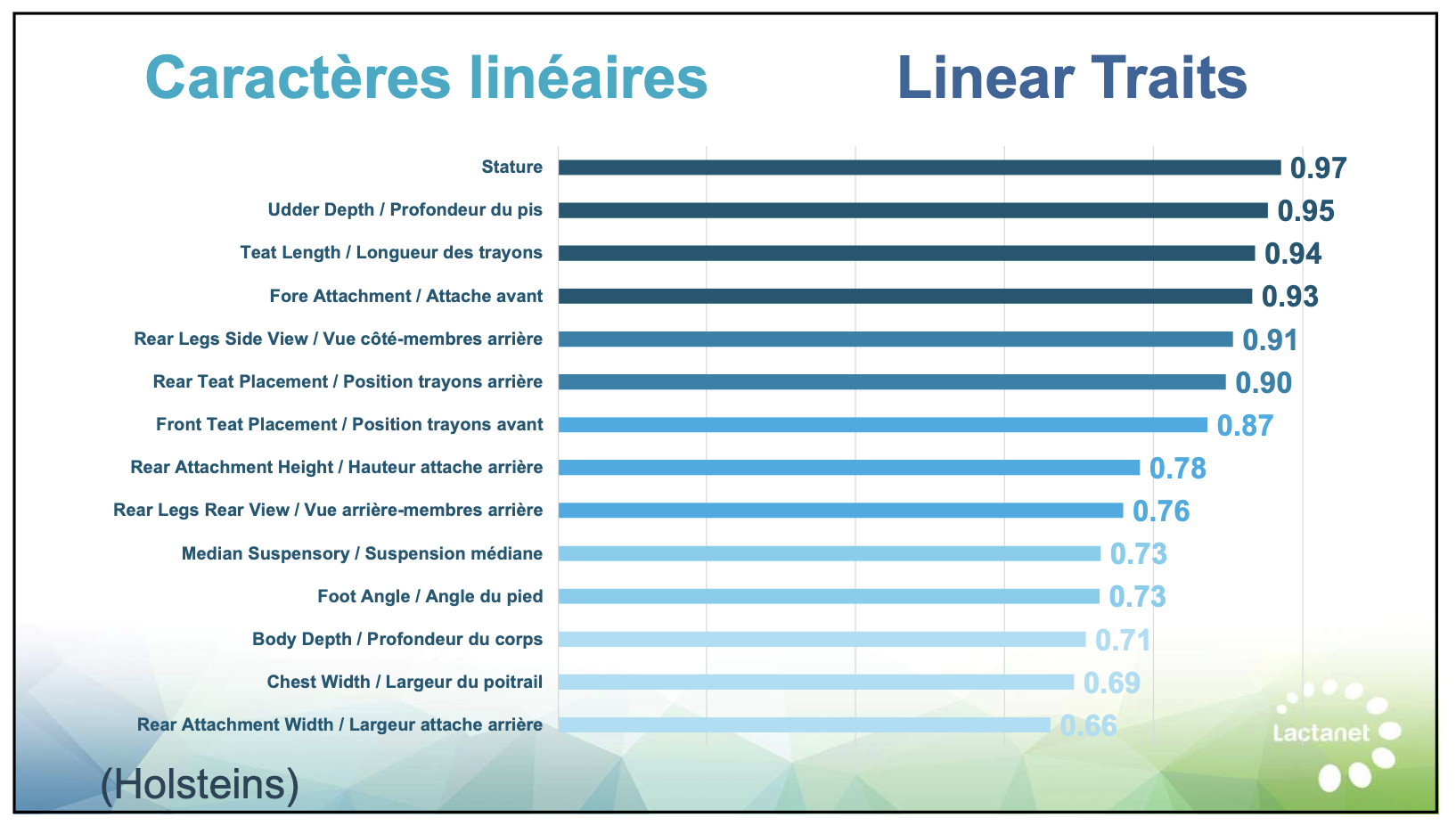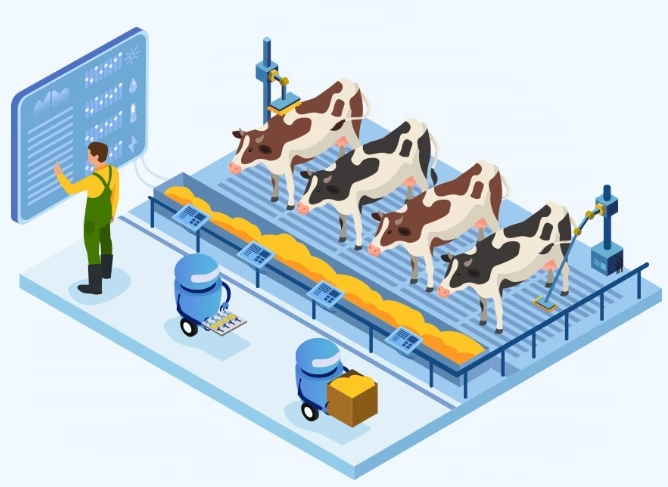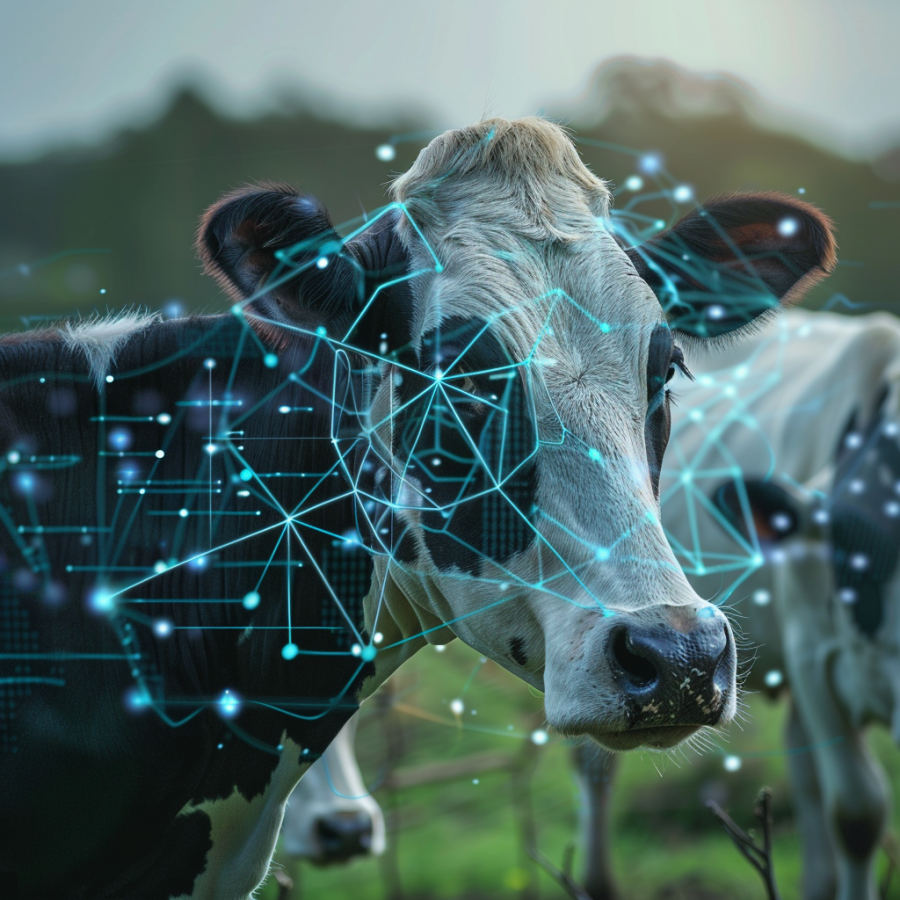Find out how Canadian dairy farmers can lower Crampy in cows. Get the latest data, genetic insights, and future strategies to boost herd health.
Summary: Crampy, also known as Bovine Spastic Syndrome, increasingly concerns Canadian dairy farmers due to its progressive neuromuscular symptoms. Lactanet’s data collection initiative aimed to provide a clearer picture of its prevalence and explore genomic evaluations for mitigation. Their analysis, involving 2,807 Crampy cases from 801 herds, revealed that genetic selection could significantly reduce its occurrence. With the heritability of Crampy estimated at 6.8%, prioritizing top-rated sires can lower the risk. Gabriella Condello’s M.Sc. thesis highlighted that Crampy primarily affects cattle between two and seven years old, with a higher incidence in younger age groups. The study emphasizes the need for ongoing data collection to refine genetic evaluations and develop effective control strategies.
- Crampy affects Canadian dairy cows as a neuromuscular disorder, primarily in the hind limbs.
- Lactanet’s data collection received 2,807 Crampy cases from 801 herds, aiding research.
- Genomic evaluations suggest genetic selection can reduce Crampy prevalence.
- Heritability of Crampy is estimated at 6.8%, indicating a genetic component.
- Crampy affects cows mainly between two and seven years of age, with severe cases often seen in younger cattle.
- Ongoing data collection and genotyping are crucial to improving genetic evaluations and mitigation strategies.

Canadian dairy producers are growing concerned about crampy cows, often known as Bovine Spastic Syndrome. Imagine spending years nurturing a healthy herd only to have your cows suffer devastating neuromuscular disorders out of the blue. Wouldn’t it be frustrating to watch your carefully controlled herd’s health deteriorating? You’re not alone in feeling this way. Crampy doesn’t just afflict cows. It affects milk production, raises veterinary expenses, and may result in significant losses. Are you willing to let these obstacles eat your profitability and peace of mind? Let’s examine why this problem is growing more widespread and what you can do about it. The answers may surprise you and, more importantly, provide a path ahead.
Unpacking Crampy: What Dairy Farmers Need to Know
So, what precisely is Crampy/Bovine Spastic Syndrome? It is a degenerative neuromuscular illness that mainly affects cattle between two and seven years old. The signs are pretty obvious: spastic spasms in the muscles of one or both hindlimbs, which spread to the back and finally the whole body. You may see your cattle shivering, straining against the neck rail as they rise, or exhibiting indications of lameness even though they can still walk with total weight.
Is it now being diagnosed as Crampy? This is when things become challenging. The course of symptoms might vary greatly, making it difficult to determine the underlying reason. This cannot be diagnosed quickly or early, complicating management and therapy options.
To complicate matters further, there’s Paresis, a similar disorder to Crampy. However, Paresis usually appears in younger animals and affects just one hindlimb. You’ll notice a “pegged leg” look rather than the trembling associated with Crampy.
Understanding these distinctions allows us to understand the broad picture when both illnesses impact herds with overlapping age groups. Crampy often affects older cattle, while Paresis affects younger ones. Both illnesses provide diagnostic hurdles and need individualized treatment options.
Lactanet’s Blitz: Farmers Rally to Combat Crampy with Data
Lactanet’s data-collecting blitz was critical in combating Crampy. This program aimed to collect thorough information on the occurrence of Crampy and Paresis in Canadian dairy herds. The blitz ran from September 2021 to April 2022, providing a limited window for gathering critical information.
During this time, dairy producers nationwide reacted enthusiastically, reporting data on 2,807 Crampy instances and 219 Paresis cases from 801 dairy herds. This excellent engagement demonstrated the dairy community’s dedication to tackling this neuromuscular condition.
The efforts of dairy producers were significant. Their willingness to offer thorough information aided the first estimate of Crampy’s prevalence and paved the way for future genetic screening methods. These activities are critical in furthering our knowledge of Crampy and finding measures to limit its effect, eventually benefiting the health and production of dairy herds throughout the country.
Digging Deep: How Detailed Data Matching and Genetic Research Could Be the Game-Changer for Crampy Control
To determine the true incidence of Crampy in the Canadian dairy sector, Lactanet methodically linked acquired data from dairy herds to herdbook-registered herd mates. This means they checked each affected cow’s information against the official records of their farm colleagues. This was critical for accurately presenting the herd’s overall health state and ensuring that the study was valid.
This extensive data was then given to the University of Guelph for further analysis. Gabriella Condello’s M.Sc. thesis focused on estimating the occurrence of cramps on Canadian dairy farms and investigating their genetics.
First, the researchers reviewed the cases to see how common Crampy was across different herds. With this baseline established, the next step was to investigate the genetic data. The idea was to see whether specific genes rendered cows more prone to Crampy. The thesis attempted to examine the possibility of gene selection as a feasible strategy for reducing Crampy’s occurrence in herds.
Age Matters: Unveiling the Alarming Spike in Severe Crampy Cases Among Younger Cattle
According to current data collecting, Crampy affects cattle of varied ages, with a maximum age of 12 years. However, most instances occur in the lower age groups, particularly between the ages of two and seven. Many cases have been detected among these cattle, with younger animals showing a specific surge in severity. Specifically, 566 severe Crampy instances were observed at younger ages, emphasizing the need for early detection and management techniques in afflicted herds.
Genetic Selection: Your Key to Combating Crampy in Dairy Herds
Extensive data analysis revealed that Crampy’s genetic component has the potential to minimize its occurrence. We reduced the overlap between Crampy and Paresis instances by concentrating on cows aged three or older with neuromuscular disease indications. This filtering yielded 1,952 Holstein cows, giving a solid dataset for further analysis.
Crampy’s average within-herd prevalence rate was determined to be 4.7%. This value changes amongst herds, indicating the role of genetics and environmental influences. Crampy has a heritability of 6.8%, highlighting the role of genetic selection in alleviating the ailment.
An essential part of this research was determining the association between sire estimated breeding values (EBVs) and the occurrence of Crampy in their daughters. Daughters of low-rated sires were shown to be 3.2 times more likely to acquire Crampy than sons of high-rated fathers. This association indicates that choosing against sires with greater Crampy frequencies may dramatically lower its prevalence, demonstrating the importance of genetic assessment and selection in long-term genetic improvement.
Why Prioritizing Genetics Could Be Your Best Move Against Crampy
The research presents numerous essential insights for the dairy business. First, Crampy’s average within-herd incidence rate is estimated at 4.7%, implying genetic and environmental factors. Crampy’s heritability was determined to be 6.8%, showing a high potential for genetic selection. Furthermore, daughters of low-rated sires are 3.2 times more likely to develop Crampy, emphasizing the need to focus on top-ranked sires to minimize prevalence rates.
These data indicate that targeting low-rated sires might benefit genetic improvement. Furthermore, the research discovered large genomic areas related to Crampy, demonstrating that numerous genes regulate it. This opens the path for genetic selection as a powerful tool to combat Crampy.
However, more data collecting is required before a nationwide genetic assessment system can be created. Implement a nationwide plan to monitor Crampy symptoms in nursing cows throughout time. Both afflicted and unaffected cows should be genotyped to improve the accuracy of future genomic assessment systems. To fully utilize the promise of genetic and genomic technologies in the fight against Crampy, the dairy sector must engage in a cost-effective, ongoing data-gathering effort.
The Bottom Line
As the dairy sector deals with Crampy, a planned, continuing nationwide data-gathering approach centered on lactating cows during milk recording is critical. Genotyping afflicted and unaffected cows will improve genomic assessments and the precision of genetic selection. The Canadian dairy sector must develop a cost-effective method for identifying Crampy cows over time, assuring sustainability and efficacy, resulting in healthier herds and more resilient dairy operations.





















